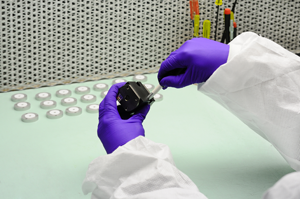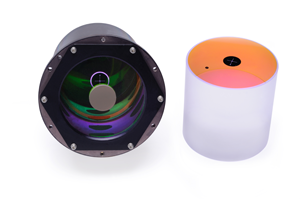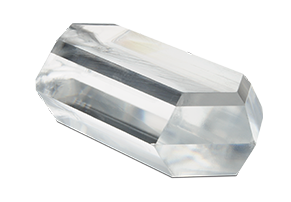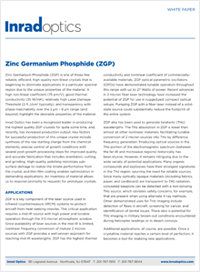Inrad Optics fabricates optical materials to exacting quality standards and incorporates those materials into advanced optical components, assemblies and systems. Our materials know-how is reflected in our broad portfolio of standard and build-to-print optical components—including large form factor, extreme precision components, bent crystal assemblies, and metal optics. Our optical design-for-manufacturability expertise allows us to execute even the most challenging custom optics designs.
Our Mission
We improve the world’s safety, security, and scientific understanding by transforming challenging requirements into optical realities.

Crystals to Components
We produce optical materials to the highest quality standards. At our facility in New Jersey, we have developed proprietary methods for processing optical crystals, diamond turning and surface treatment methods for metal optics, and micro-thinning of x-ray crystals for spectroscopy applications.

Optical Problem Solving
Working on a build-to-print basis or as part of your design team, we specialize in the integration of optical components into mechanical assemblies and electro-optic systems.
→ Learn more about our custom optics program.

Powered by Materials Expertise
Everything we do starts with an expertise in optical materials. From novel crystals for emerging applications to beryllium mirrors, our application engineers can help you identify the right optical component for the job at hand.
→ Learn more about our advanced optics manufacturing capabilities.

Optical Coatings
Advanced thin film coatings have long been a key part of our in-house optics manufacturing capabilities. With our plasma assisted deposition system, we can produce thin film coatings on optics as large as 60 inches across.
→ Find out more about our engineered thin film coatings.
Optics Resources
High Performance X-ray Crystals
Zinc Germanium Phosphide (ZGP)
Zinc Germanium Phosphide (ZGP) is one of those few reliable, efficient, high quality non-linear crystals that is beginning to dominate applications in a particular spectral region due to the unique properties of the material. A high non-linear coefficient (75 pm/V), good thermal conductivity (35 W/mK), relatively high Laser Damage Threshold (2-5 J/cm2 typically), and transparency with phase-matchability over the 2 μm – 8 μm range (and beyond) highlight the desirable properties of the material.
Download White Paper
Optics Blog
Guidelines to Metal Optics Roughness and Flatness
Although a mirror’s surface appears smooth to the naked eye, if you looked at it through a microscope you’d see many peaks and valleys. These surface imperfections can cause interference with light waves and other electromagnetic radiation. For this reason, understanding the degree and nature of this interference is crucial to successfully designing a metal based optical system.
Newsletter Signup
Get product and technology news updates in your inbox.

